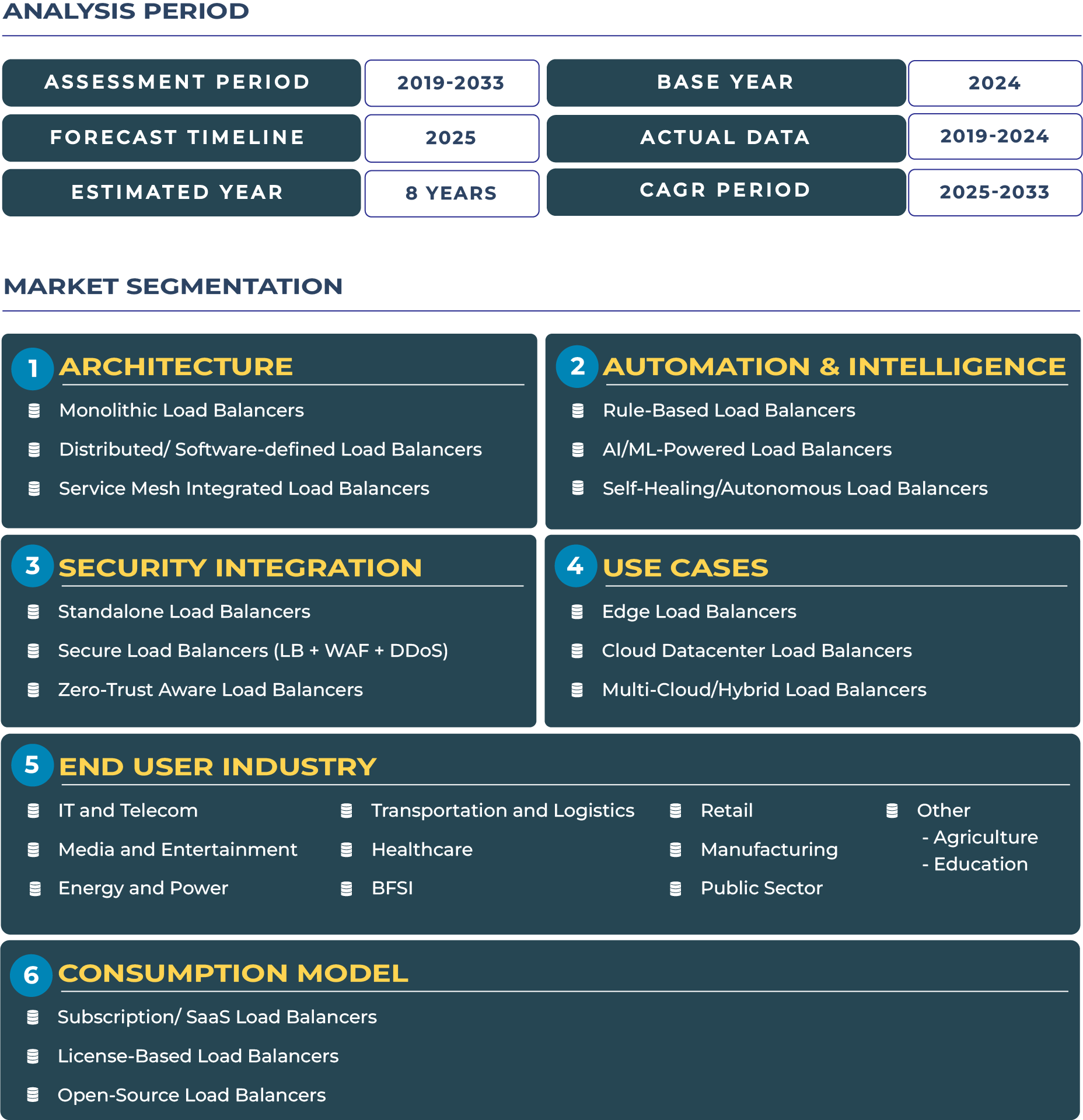Report Format:
![]()
![]() |
Pages: 110+
|
Pages: 110+
Hong Kong Cloud Load Balancers Market Outlook: Financial Connectivity Driving Cloud Load Balancers Adoption in Hong Kong
Hong Kong’s position as a global financial hub and gateway to China is shaping its cloud infrastructure priorities, particularly in the cloud load balancers market. The city’s role in international banking, wealth management, and fintech innovation drives demand for secure, high-performance, and finance-grade load balancing solutions. According to DataCube Research, the Hong Kong Cloud Load Balancers Market is projected to grow from USD 49.5 million in 2025 to USD 171.6 million by 2033, expanding at a CAGR of 16.8%. This robust growth is underpinned by high application workloads from digital finance platforms, a growing ecosystem of data centers, and the city’s critical role in cross-border data exchange with Mainland China. Despite global uncertainties and regional competition, Hong Kong continues to leverage its strong connectivity infrastructure and financial services dominance to establish itself as a critical node in the cloud load balancers industry.
Drivers & Restraints: Financial Hub Advantages Balanced Against Structural Constraints
One of the key growth drivers for the Hong Kong cloud load balancers ecosystem is its status as a financial services hub. The city’s concentration of banks, asset managers, and fintech companies generates significant demand for high-availability and secure load balancing solutions tailored for mission-critical applications. Strong connectivity to Mainland China further accelerates demand, with Hong Kong serving as a bridge for international firms accessing Chinese digital markets. Additionally, the finance sector’s high average revenue per user (ARPU) supports investment in advanced service mesh integrated load balancers designed for latency-sensitive workloads.
However, several restraints are holding back the market’s full potential. Geopolitical and regulatory uncertainties continue to create cautious investment sentiment, particularly as global firms weigh Hong Kong against Singapore. Limited land availability for large-scale data center expansion poses another challenge, creating a cost-sensitive environment for infrastructure scaling. Moreover, increasing compliance requirements for data sovereignty and security may add layers of complexity to deployment strategies. These factors, while not stalling growth, act as brakes on the pace of expansion in the cloud load balancers sector.
Trends & Opportunities: Finance-Grade Load Balancers and Cross-Border Connectivity Lead Growth
Emerging trends in the Hong Kong cloud load balancers landscape are closely aligned with the financial sector’s priorities. The demand for finance-driven load balancing features, such as ultra-low latency, disaster recovery readiness, and high transaction throughput, is becoming standard. Cross-border cloud connectivity needs are also shaping deployment models, with enterprises requiring load balancers that can ensure seamless performance across jurisdictions. Sovereignty considerations further highlight the importance of hybrid and private-cloud models to balance regulatory compliance with international data flows.
Opportunities in the market are significant, particularly for players offering finance-grade LB features. Cross-border load balancing and peering solutions have the potential to redefine Hong Kong’s position as a hub for regional data exchange. Private-cloud offerings for wealth management and asset servicing firms represent another high-value opportunity, particularly as institutions seek to modernize infrastructure while ensuring compliance. Vendors that can combine distributed and software-defined load balancers with strong financial sector alignment are poised to capture disproportionate growth in this market.
Competitive Landscape: Strategic Focus on Finance Vertical and Cross-Border Solutions
The competitive dynamics in the Hong Kong cloud load balancers industry reflect the interplay of international providers and regional players. Companies such as F5 Networks have deep penetration in finance and telecom, with their finance-grade solutions aligning with Hong Kong’s sectoral needs. Local cloud providers are partnering with global players to address sovereignty and connectivity concerns, offering hybrid architectures optimized for financial services workloads. A prominent strategy in the market has been a focus on finance verticals and cross-border capabilities, enabling enterprises to achieve compliance while maintaining high application performance.
Recent developments include heightened investment in distributed load balancers and software-defined architectures, which cater to the rising needs of financial institutions operating across Hong Kong and Mainland China. Telcos are also entering partnerships to integrate cloud load balancing services into their enterprise offerings, reinforcing the city’s role as a cross-border connectivity hub. These developments strengthen Hong Kong’s positioning as a resilient and finance-driven market in the global cloud load balancers sector.







